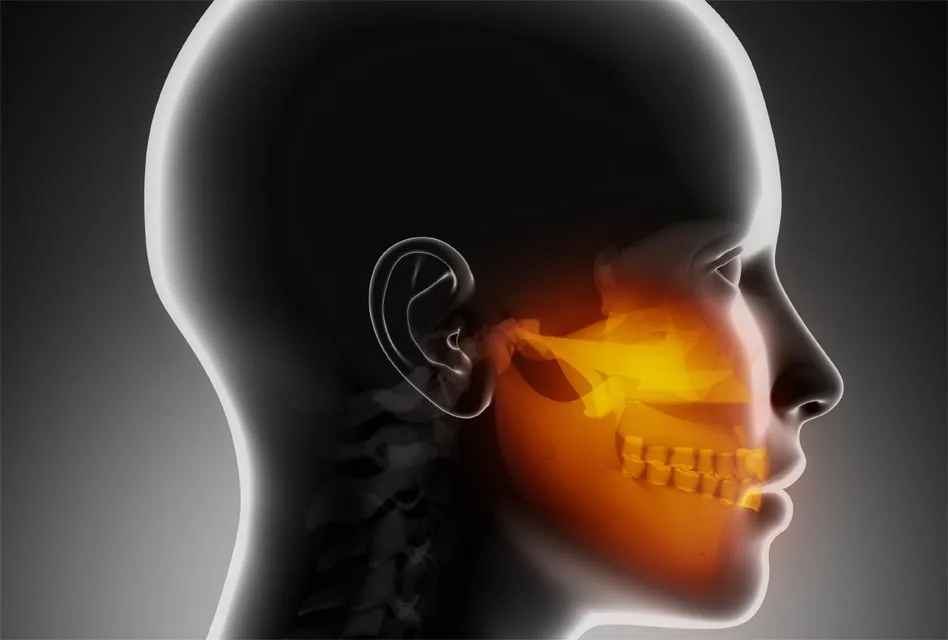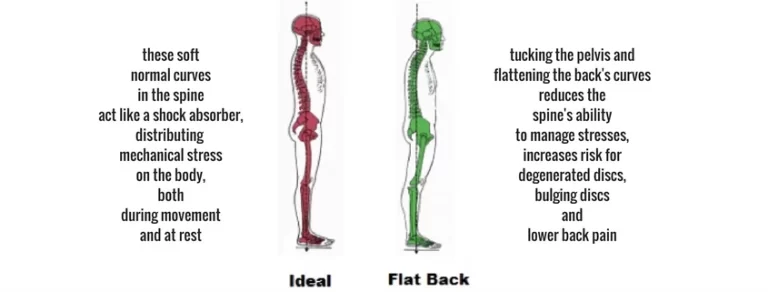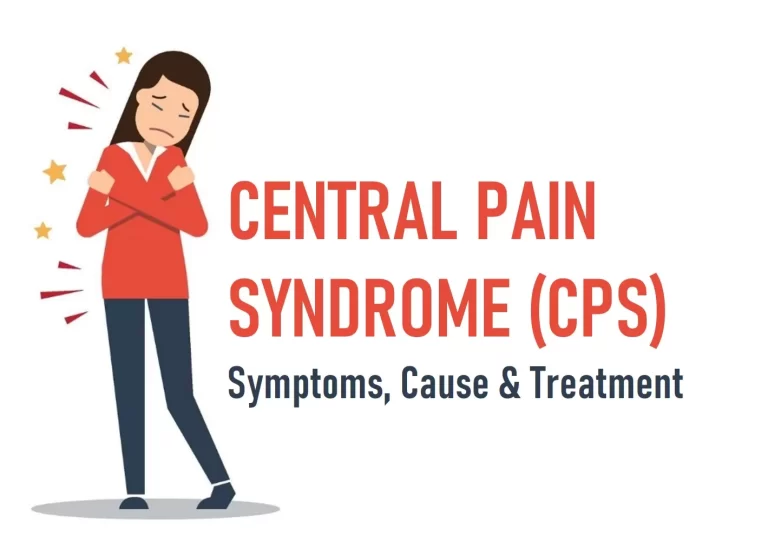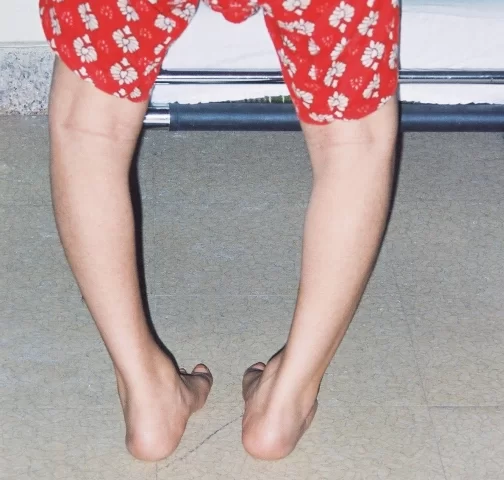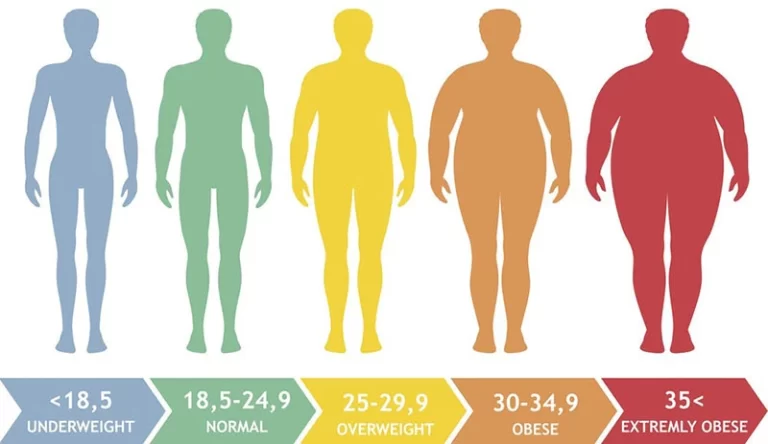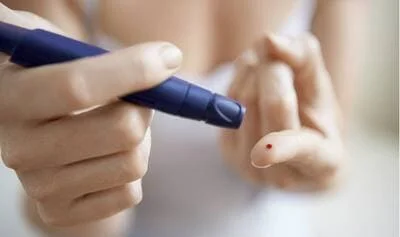Trismus
What is Trismus?
Trismus generally referred to as lockjaw, is a medical situation in which the normal motion of the mandible (jaw) is decreased as a result of sustained, tetanic spasm of the masticatory muscles innervated by the trigeminal nerve. Thus interrupting the person’s eating, swallowing, normal speech, and oral hygiene and in some circumstances raising the risk of aspiration. Issues of Trismus can be temporal (generally resolves after two weeks) or of permanent growth, with most dropping into the former.
The normal degree of mouth opening or maximal incisal opening (MIO) differs from one person to the other, with men having a larger mouth opening compared to women. It is generally between 40-60mm, some writers yet insist on a 35 mm lower margin. This range frequently compares to two-three finger ranges when inserted sidewards. Lateral motion is 8-12mm.
Epidemiology
The majority of trismus varies widely, partially because no clear measures have been shown, and relies on the inciting etiology. Significantly, trismus is a familiar result in certain people populations, such as those with congenital micrognathia syndromes or experiencing radiation therapy for head and neck cancers. It can also be a fairly rare difficulty of common diseases, such as pharyngitis.
What are Trismus symptoms?
Clinical sign relies especially on the cause of the trismus. Yet, they display some familiar characteristics. These contain:
Limited mouth opening, controlling the 2-3 fingers placed side by side from fitting into the intertidal area as seen in normal subjects. The inability to conduct lateral mandible motions frequently suggests trismus due to bony Temporal mandibular joint TMJ ankylosis
Ache during forced mouth opening. Palpation of the masticatory muscles involved in the acute stage also elicits pain.
Deviation of the mandible towards the involved side is an outcome of muscles not functioning correctly because of spasms.
A sensation of muscle cramping, tightness, or stiffness
Diffuse facial swelling and fever when associated with illnesses.
Speech impairments are frequently guided to as hot potato voice.
Impaired oral input, mastication, and nutrition conduct to weight loss. Weight loss may also be associated with neoplastic reasons.
Poor oral hygiene
Aspiration
Problem in breathing
What causes Trismus?
There are numerous possible causes of trismus, including the next:
Trauma
Injury or harm to the jaw can conduct to trismus. Instances of such trauma contain fractured jawbones or tissue injury following dental surgery.
Others contain:
contusion of the temporomandibular joint (TMJ)
hematoma, which is an accumulation of blood outside of blood vessels
damage to the muscles of mastication, which patients use when chewing
Inflammation
Some medical diseases that induce inflammation in the mouth may induce trismus. One instance is pericoronitis, which is inflammation of the soft tissue near a tooth, potentially conducting to an affected molar.
Others include:
arthritis in the jawbones
scleroderma, which is an autoimmune condition that involves connective tissue
soft tissue fibrosis, which happens when extra fibrous connective tissue builds
Dental surgery
Oral surgery, involving wisdom tooth extraction, may induce inflammation in the mouth, which can guide to trismus.
Hyperextension, which is including to open the mouth broader than its usual range of movement, during surgery may also conduct to lockjaw.
Infection
Infections can contribute to trismus in some possibilities.
Types of infections that may do this involve:
- mumps
- tetanus
- tonsillitis
- peritonsillar abscess
- other kinds of abscess
- Cancer or cancer therapy
Cancerous tumors in the head or throat can involve the function of the jaw.
Radiation therapy for these tumors can also induce trismus.
According to a small 2016 analysis consisting of 30 participants with oral cancer, trismus involved 53.3% of them at the time of diagnosis.
This digit rose to 86.7% after surgery and 85.7% after radiotherapy.
Temporomandibular joint disorder (TMJD)
On the per side of your jaw, there’s a temporomandibular joint. This joint acts as a sliding hinge, attaching your jaw to your skull and permitting you to open and close your mouth. When there’s dysfunction in the joint, it can generate trismus and pain. Joint dysfunction can occur due to:
- trauma
- arthritis
- genetics
- misaligned bite
stress-related behaviors such as habitual clenching and grinding of teeth
According to research analyses, up to 11.2 percent of a patient with temporomandibular joint disorder – TMJD report having a problem opening their jaw.
Risk factors
While anyone can generate trismus, some aspects may raise the possibility of developing it.
These contain:
- having head or neck cancer
- experiencing radiation therapy for head or neck cancer
- current oral surgery to extract a wisdom tooth
- current trauma to the mouth or jaw
- having specific kinds of mouth infection
Diagnosis
A doctor or physician will bring out a physical examination and carry a person’s medical record to analyze the trismus.
They may ask regarding recent hurts or dental work and examine for signs of cancer or abnormalities in the bones or tissues of the jaw.
A doctor or physician may use one or more of the subsequent tests to assist them analyze or rule out trismus:
a measurement of the mouth opening
a CT scan
an MRI scan
Treatment of Trismus
Generally, managing the underlying disease should fix many issues of trismus.
Typically, the earlier a patient seeks therapy, the more useful the result is.
Treatment options contain:
Medication
It may be required to bring a drug to decrease aches and relax the jaw muscles. Familiar drugs for trismus contain muscle relaxers and nonsteroidal anti-inflammatory drugs (NSAIDs) to reduce pain.
Relying on the severity of the symptoms, a doctor or physician may define oral medications or drugs that need an injection into the jaw.
Some states of NSAIDs are even available over the counter.
Jaw-stretching apparatuses
A doctor or physical therapist may suggest the use of a jaw-stretching machine.
In a 2014 analysis, a patient who used a machine when conducting precise mouth activities had an average raise in mouth opening of 5.57.2 mm.
Dietary changes
People may require to create dietary changes until the disease enhances.
For most patient, moving to a soft foods diet is useful because it is likely to consume these foods without opening their mouth too greatly.
Instances of soft foods contain:
- soup
- smoothies
- yogurt
- mashed potatoes
- oatmeal
- beans
- steamed vegetables
- stewed fruits
- cheese
- fish
- scrambled eggs
Until trismus is fixed, it may be useful to avoid foods that are difficult, crunchy, or chewy, such as uncooked apples, candy bars, and hard meats.
Physiotherapy treatment in Trismus
The management of trismus is frequently dependent on the factor inducing it. If trismus outcomes are due to fibrosis of tissue or immature scar building, physiotherapy and devices can be of use. If trismus effects due to a temporomandibular joint – TMJ ankylosis or intra-articular pathologies, induce dense fibrous tissue formation, it may need surgical management.
Conservative Medical Management for Acute Trismus
Heat – Arrangement of moist hot towels on the involved site for 1020min/h.
Analgesic therapy – Aspirin is the most familiar. When pain is vast, narcotic analgesics may be displayed.
Soft diet.
Muscle relaxants – In comprehensive masticatory muscle spasms, benzodiazepines 2.55mg 3 times a day may be suggested.
Antibiotics are suggested solely if trismus has been attributed to illness.
When the reason for the trismus is of extra-articular origin, it is suggested that physiotherapy should start after cessation of the acute stage.
Aim
Decrease of edema
Soften and induce stretch of scar tissue
Raise the range of joint motion
Improve the strength of muscles of mastication.
Heat: A heat-emitting modality such as ultrasound is generally used as an adjunct to stretching activities including the muscles of mastication. This is to obtain around a growth in collagen tissue extensibility, reduced immobility of joint, and ease pain and muscle spasm. Heat has also been known to raise flow, thereby washing away exudates and decreasing edema of the muscles of mastication.
Massage: This obtains a boost in blood flow, and also aids relaxation of the muscles of mastication.
Exercise: Active and passive stretching/strengthening activities to the muscles of mastication have been supported by different authors in the therapy of trismus. As they perform to stretch scar tissue, loosen the muscle that is in spasm, and raise muscle to strengthen, getting a raised range of movement of the temporomandibular joint TMJ.
In some circumstances, you may be capable to ease tight jaw muscles using targeted activities and stretches. Here are three you can attempt:
Manual jaw-opening exercise
Recount small mouth-opening and mouth-closing motions several times as a warmup. Then, put your fingers on the top of your front four lowest teeth.
Gradually drag down until you feel slight distress on the tight side of your jaw. Maintain for 30 seconds, and then gradually release your jaw back to the beginning position.
Begin by repeating this stretch 3 times, and perform your way up to 12 repeats.
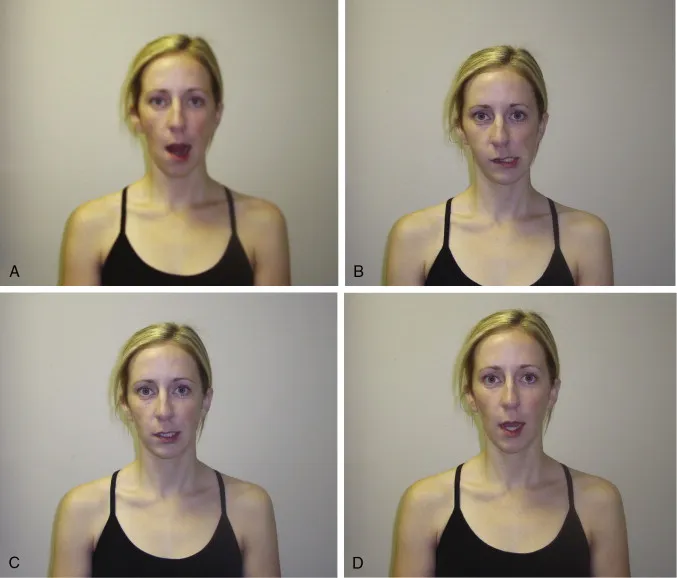
Passive Stretching Exercise
This activity is indicated to lightly stretch your jaw muscles, to ease trismus ache.
Step 1: Place your thumb on your highest teeth in the middle of your jaw.
Step 2: Place the index finger of your further hand on your lowest teeth in the middle of your jaw.
Step 3: Unlock your mouth as broadly as possible, using your fingers to provide additional resistance. Maintain this stretch for five to 10 seconds. Discontinue if you sense pain.
Reprise this five times.
Jaw joint stretch
This activity assists to stretch the muscles of the jaw and neck.
Push the tip of your tongue onto the top of your mouth, straight after your top front teeth without feeling them. Subsequent, use your tongue to use gentle force. Gradually open your mouth as broad as you can, then gradually close it shut.
Stop at the moment when you sense discomfort. Reprise up to 10 times. Yet, you shouldn’t do this activity if it generates you any pain.
Smile stretch
This stretch assists stop stress in the upper and lower jaw, facial muscles, and neck.
Smile the broadest smile you can without sensing tightness or pain. While smiling, gradually open your jaw an extra 2 inches. Inhale greatly via your mouth, then exhale while allowing go of the smile. Reprise up to 10 times.
Chin Tucks
Maintaining good posture will assist to maintain your neck and shoulders flexible. This activity will ease tension and enhance your movements.
Step 1: While looking ahead, drag your chin into your chest.
Step 2: Drag your head back to a resting place, so your ears are in sequence with your shoulders.
Maintain this stretch for three seconds, and reprise it five times.

Neck Stretch
Stretching the neck is another method to enhance posture and ease tension in your neck and jaw muscles. Attempt this neck stretch to see if it assists:
Step 1: Flex your head forward and then backward.
Step 2: Bend your head to the right and then to the left.
Step 3: Gradually flex your head, dragging your ear to your shoulder while maintaining your shoulder calmed, as far as feasible. Discontinue if you sense pain. Reprise on the further side.
Maintain this stretch for 30 seconds, and reprise it five times.

Springy bites
Gently puts your index finger between your top and lowest front teeth with the nail beneath your top front teeth.
Currently gently rehearse small springy bites to begin using the jaw muscles.
Do not chew down difficult on your finger, only little motions so your top and lowest teeth are only pressing your finger.
Accomplish this for one minute often throughout the day.
As this evolves more comfortably you can raise the range of motion as follows:
Bend your index finger onto the side so you raise the stretch and follow the same process as above.
To further improve the stretch utilize the flat of your thumb then turn your thumb onto its side to broaden the stretch also.
Ultimately, use two fingers or your thumb and finger between your top and lowest front teeth.
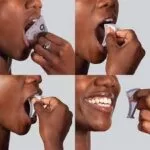
Wooden spatulas
Your speech and language therapist or physiotherapist may supply you with wooden spatulas which estimate one millimeter in consistency. You can accomplish passive jaw movements by inserting the needed numeral of spatulas between your teeth to create a stretch.
Sugarless Chewing Gum: This is another asset of delivering lateral motion of the temporomandibular joint – TMJ.
Trismus Devices: In meeting with physiotherapy, they are machines created for mandible movement rehabilitation. The machines are separated into external and internally triggered. Externally triggered machines generate forcible stretching of the elevator muscles by pushing the mandible. While the internally triggered machine stretches the affected elevator muscles and further tissue that restricts mandibular opening.
Externally Activated Devices
Inflatable Bite Opener
Dynamic Bite Opener
Threaded Tapered Screw
Shell Shaped Mouth Opener
Screw-Type Mouth Gag
Tongue Blades
Fingers
Therabite Jaw Motion Rehabilitation System.
Internally Activated Devices
Tongue Blades
Plastic Tapered Cylinder.
Shortwave diathermy laser treatment
Shortwave diathermy laser treatment utilizes a high-frequency electric current to induce heat in the body. It can assist ease pain and raising blood flow.
Acupuncture
Acupuncture is an alternative therapy that some patients find useful in treating jaw issues. It includes inserting tiny syringes into strategic stress points of the body in an try to ease the pain.
Surgical Management
Surgery is frequently suggested when the reason for trismus is an outcome of intra-articular pathologies affecting the temporomandibular joint. Bony interferences from styloid or coronoid processes, the fact of a foreign body may need surgical intervention. If trismus is generated due to dense fibrotic band construction in the submucosa, lysis of these bands is done utilizing a laser. Myotomy of the masseteric muscle assists in particular circumstances.
Home remedies for Trismus
Jointly with medical intervention, there are items you can do at home to assist ease trismus and control it from aggravating. You can attempt these two or three periods during the day.
Massage. See the regions of your jaw that are hurting and, moving your fingers in a circular movement, massage the region for approximately 30 seconds.
Stretch your neck. Tuck your chin into your chest and maintain for 30 seconds, then obtain your head back and maintain for another 30 seconds. Also, push your head to the left and then the right. Eventually, roll your head in a circular movement.
Avoid clenching your jaw closed or grinding your teeth jointly. This can exacerbate jaw tightness and pain.
Bring a magnesium supplement. Magnesium is an essential mineral included in ache regulation. One 2020 analysis also discovered that bringing magnesium tablets or lozenges before and after oral surgery reduced the severity of postoperative pain and trismus.
Attempt using CBD. Although more study is required, some analyses indicate that using CBD oil topically could assist loosen the jaw muscles and reduce pain.
Restrict caffeine intake. Caffeine may aggravate the trismus by tightening the jaw muscle. For some patients, it could also generate anxiety, which may also conduct in jaw clenching.
Heat therapy. Putting a hot, moist towel on the jaw for 15 minutes per hour can calm the muscles and stimulate blood flow.
How to Prevent Trismus?
Decreasing stress and anxiety may assist control of jaw pain. Stress-relieving methods to try to contain:
- deep breathing exercises
- low impact aerobic activity, such as walking, dancing, and swimming
- yoga
- meditation
Avoiding extreme chewing and overuse of your jaw muscles may even assist to control jaw pain. Attempt eating soft foods that aren’t sticky, and avoid foods that need extreme chewing, such as:
- steak
- taffy
- raw carrots
- nuts
If at-home prevention methods don’t work, speak with a doctor or dentist to define how you can see ease for jaw tightness.
Complications of Trismus
Trismus may generate a combination of complications that can involve a patient’s quality of life, involving:
Oral hygiene problems
If a patient cannot open their mouth completely, this creates supporting oral hygiene more challenging.
Poor oral hygiene can guide to:
- bad breath (halitosis)
- dental caries (cavities)
- infection
Trismus may also create it hard for those wearing dentures to insert the dentures or release them for cleaning.
Difficulty eating
If a patient cannot chew, bite, or swallow correctly, there is a possibility of malnutrition and dehydration.
Temporarily shifting to a predominantly fluid and soft foods diet may assist decrease these risks.
Many of the infectious and traumatic reasons for trismus may also have associated difficulties. For instance, an odontogenic infection that generates trismus may lead to other infections with facial cellulitis or mandibular osteomyelitis.
Infection
If an infection is a reason for trismus, there may be associated difficulties, such as cellulitis.
Cellulitis is a skin inflammation that is frequently due to infection. The symptoms contain:
- edema, or swelling
- reddening of the skin
- the warmth emanating from the infection area
- pain
Prognosis
Trismus is most generally self-limited and transient, generally determining within two weeks. Yet, in particular circumstances, like a person who creates fibrosis from radiotherapy, the duration of trismus may be longer and refractory to conservative therapy.
FAQ
What is the 3-finger test for trismus?
The 3-Finger Test
A fast and straightforward way to determine a feasible chance of Trismus is to identify three of your fingers, piled, between your upper and lower teeth, or dentures. If the mouth can spread broadly sufficient to accommodate them comfortably, then Trismus is improbable to be a difficulty.
Can you recover from trismus?
Trismus generally fixes itself in less than two weeks, but it can be extremely painful in the meantime. Permanent trismus can happen too. Whether trismus is about for days or months, daily activities and massaging can reduce the pain.
Can trismus cause permanent damage?
Although trismus much more generally shows as a temporary difficulty, it can evolve into a permanent state if a person does not undergo rehabilitative therapy on time.
Should I go to the hospital with trismus?
If you sense such as you might have Trismus or lockjaw, you must visit an ENT hospital. They might guide you to a dental surgeon and an orthopedician, established on the severity of the situation.
Is trismus an emergency?
A skilled emergency dentist should supply round-the-clock assistance and have the talent to manage this situation instantly. In some circumstances, the pain of having trismus evolves too unbearable. A trouble dentist can specify painkillers to the person or numb the involved region temporarily.

